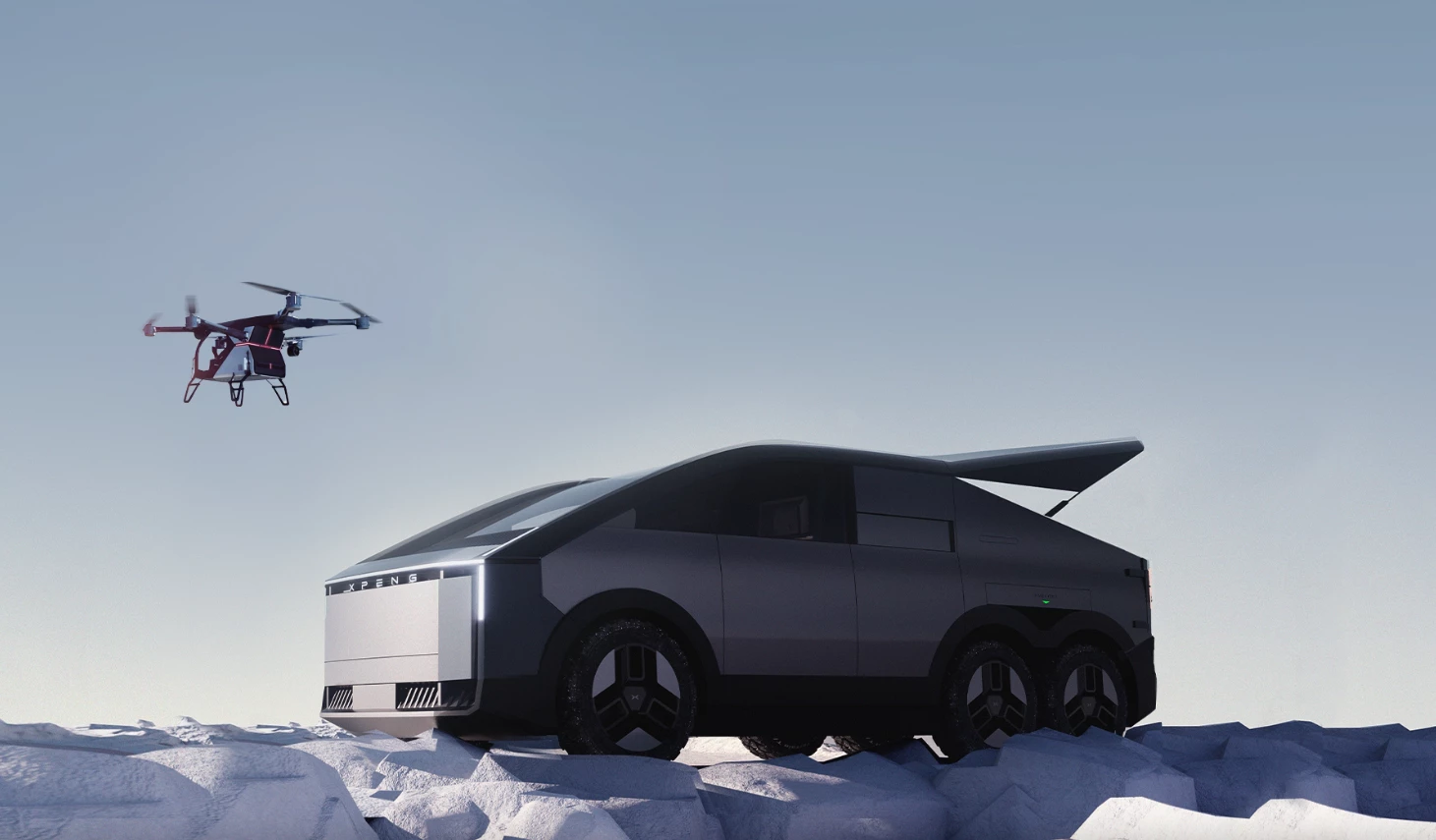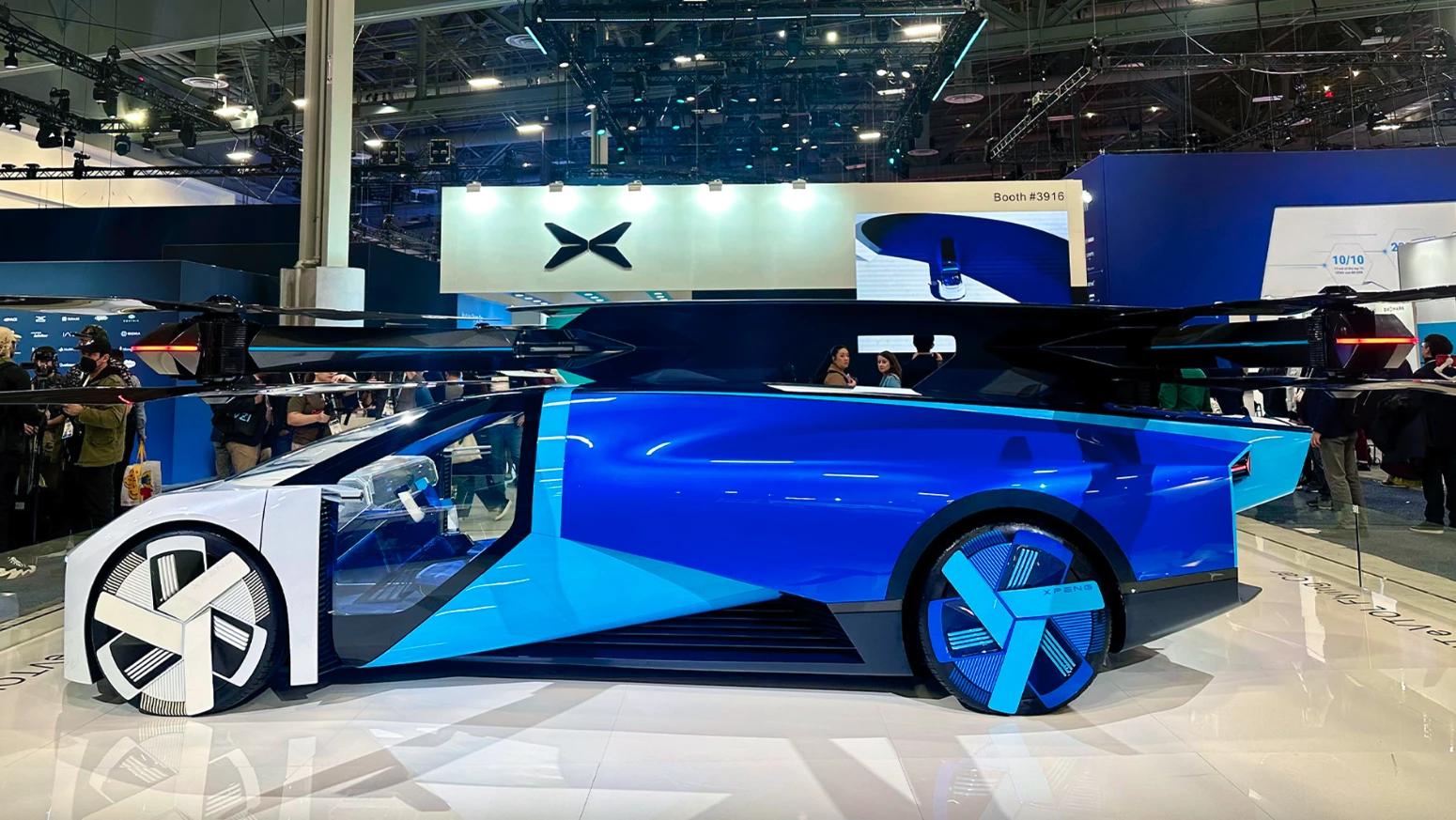Chinese company AeroHT previewed some of the weirdest, and most potentially disruptive vehicles of 2023 at its parent company Xpeng's tech day last October. We had to stifle a giggle when we saw the Land Aircraft Carrier (LAC), an all-terrain van-like six-wheeler that carried and launched its own fold-out personal eVTOL.
At the time, it was a nice rendering, and a fun exercise in unrestrained imagination, but AeroHT quickly followed up with a production announcement at this year's CES. And yes, they're serious – Xpeng is now moving forward with the Chinese airworthiness certification process necessary to develop the most compelling part of this dual-mode vehicle: the two-seat, fold-out, multi-rotor eVTOL.
Looking at that header picture of what AeroHT calls a modular flying car, it's way too easy to slide into a daydream about off-roading to the edge of some distant cliff or canyon, perhaps the Grand Canyon itself, before taking off on a two-person copter ride to three-dimensionalize that superlative scenery in a way not currently possible.
It's also easy to imagine the LAC being used for deep-wilderness search-and-rescue ops, on which the glassy, little eVTOL could serve as a means of proceeding when terrain becomes completely impassable for even a six-wheel bull with all-electric torque at each wheel.
Or the eVTOL could be used to visually sweep large areas of terrain before returning to the 6x6 to continue the mission on the ground. Maybe Hyundai's boulder-hopping robo-rovers could even step in when necessary. The whole thing seems like a ridiculous sci-fi fantasy.
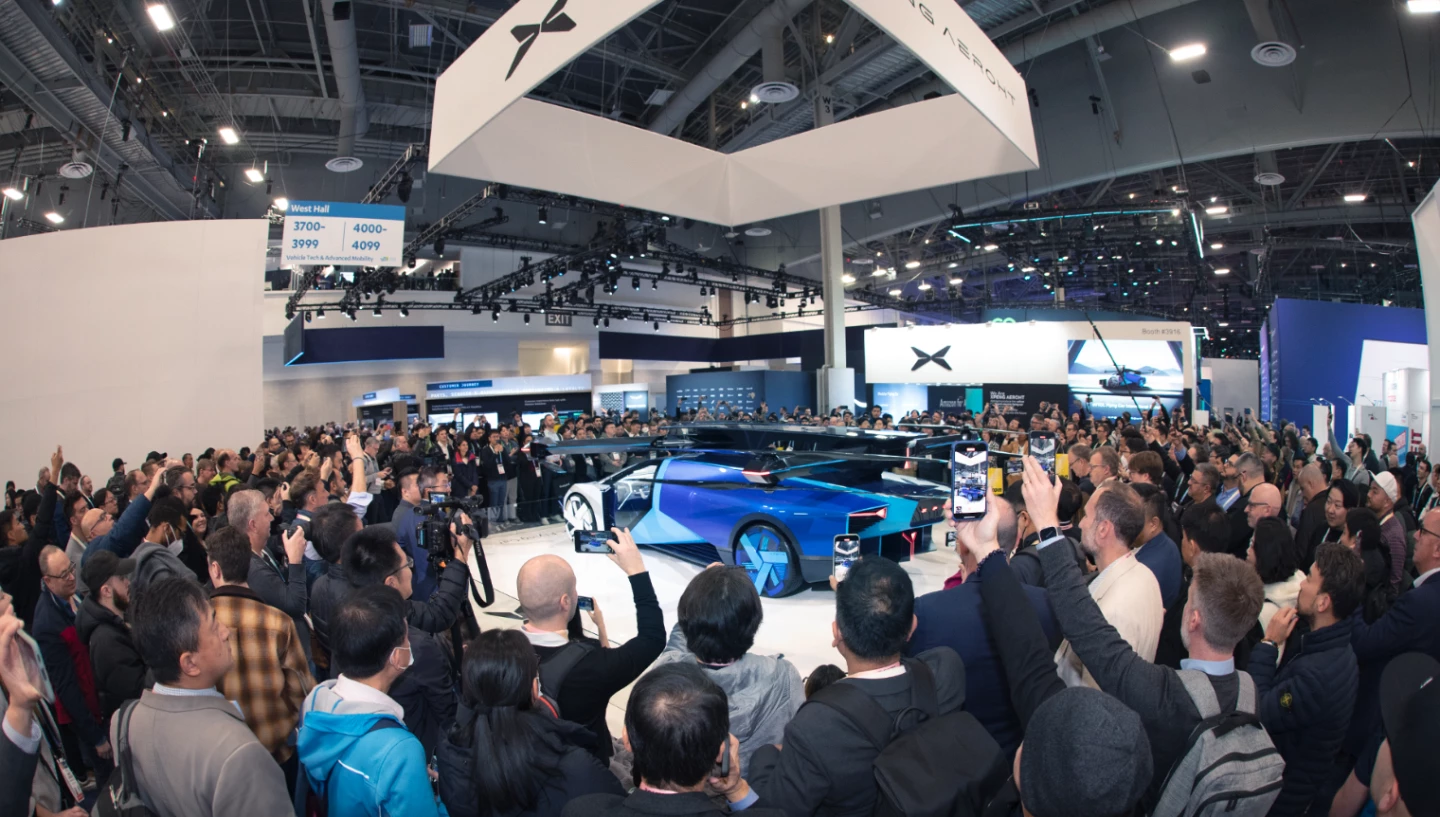
But apparently it's not; AeroHT says it's preparing the Land Aircraft Carrier for preorder by Q4 2024, presumably with something resembling a real model name. It even mentioned plans to begin individual deliveries in Q4 2025.
As such, it's begun the aircraft certification process. In late March, AeroHT had its application for type certification accepted by the Civil Aviation Administration of Central and Southern China (CAAC). That sets up the air-bound half of the LAC duo (designated X-3F) to move forward and request an airworthiness certificate to start flight testing.
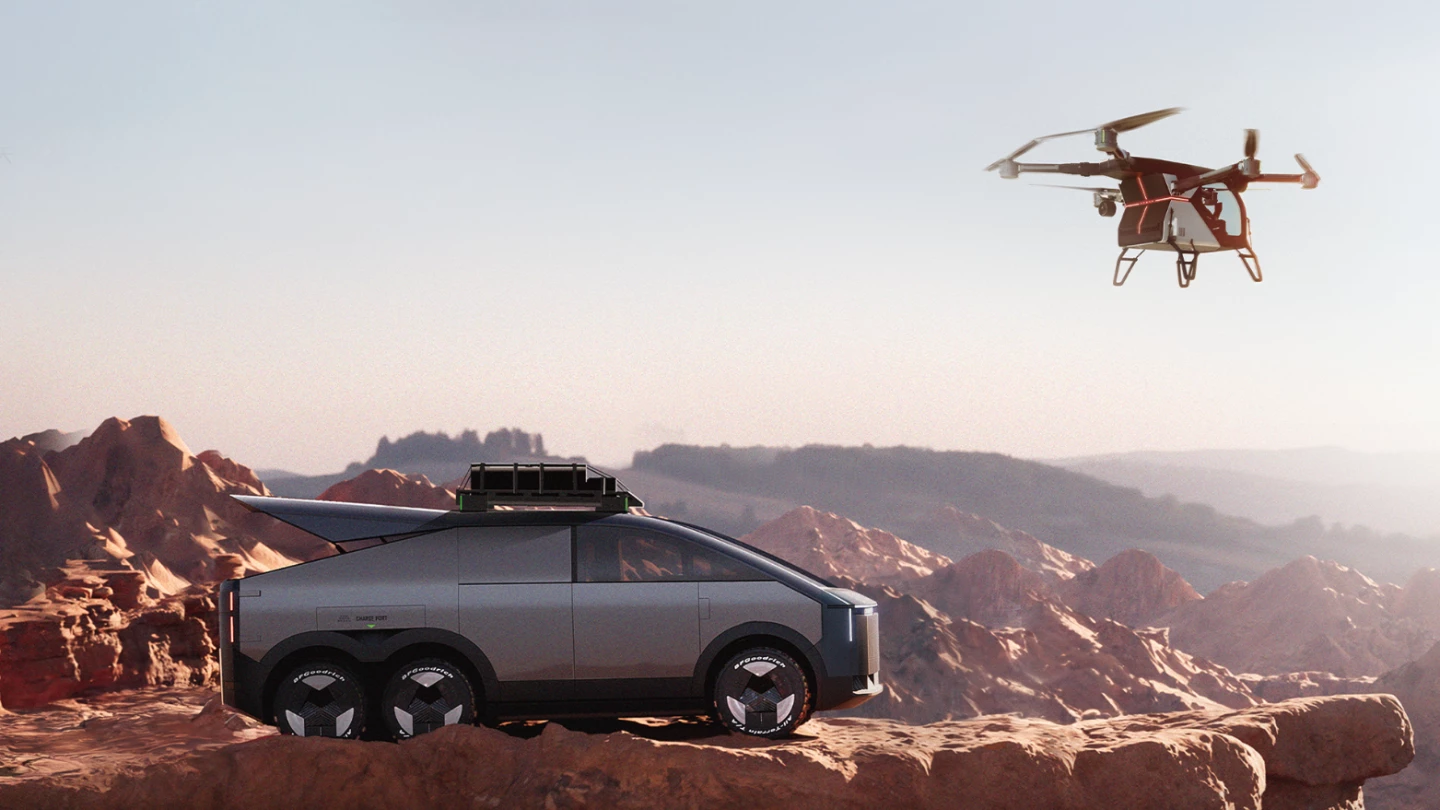
It remains to be seen exactly how this thing might end up being certified for sale, or what kind of license you might need, if any – but the CAAC has shown it's willing to accelerate eVTOL certification in the name of competitive advantage.
eHang's two-seat air taxis are already fully type certified and in commercial service in China, while the FAA and EASA are likely at least a year away from certifying any eVTOL aircraft in the US or Europe. Oh, and the eHang aircraft is fully autonomous – a concept that feels like it might be a decade away from even being considered in the US at this point.
As a child of the 80s, I can't help but think of those awesome M.A.S.K. multi-vehicles we used to love in Saturday-morning cartoons. My personal favorite was Gator, a Jeep CJ that split its body and chassis like a set of crocodile jaws to fire out a mini speedboat. In a similar way, AeroHT's LAC design features two useful vessels that combine together to surpass the sum of their individual parts, creating a new class of personal super-transporter.

The ground vessel is a van-like people/cargo carrier with an extended-range electric 6WD. The extra length afforded by the dual rear axle allows it to swallow the compact two-seat eVTOL behind the second row of its five-person cabin. Along with six driven wheels, a rear-wheel steering system helps improve all-terrain maneuverability.
The X3-F air module is, of course, an all-electric vessel with vertical takeoff and landing capabilities, ready for low-altitude flight. It docks and charges on the ground-based hybridized "mothership" before taking off into the sky, its 270-degree panoramic cockpit serving pilot and passenger equally well on search-and-rescue missions as leisure tours.
It's designed for both manual and automated flying, and features six propellers worth of distributed electric propulsion – enough to meet safety requirements governing single-point failures.
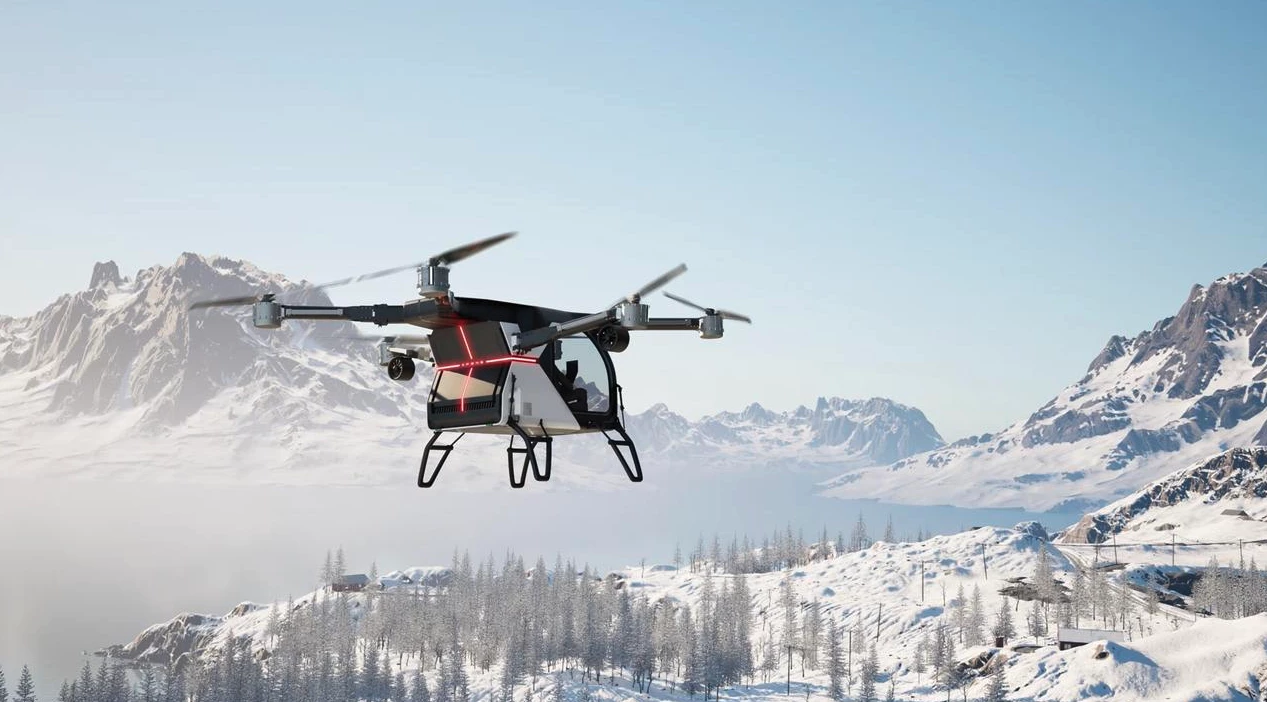
AeroHT still has to move forward with the separate automotive certification process for the ground-based six-wheeler – and at some point, it'll need to move past cool renderings and show us some actual hardware.
If this machine was being built anywhere but China, the dual red-tape nightmares of auto and aero certification would place the Land Air Carrier at least a few years from reality. But Xpeng is a multi-billion dollar rising force in a country that's decided to clear the path for advanced technologies – and the company seems deadly serious in its flying car and multi-mode vehicle ambitions.
AeroHT is already well advanced with its standalone eVTOL, to the point where it's demonstrated its ballistic failsafe parachute in action on a full-size prototype. It's also already made us eat our doubting words on at least one previous occasion, having flown a prototype of a frankly outrageous fold-out electric flying supercar that's every bit as absurd as the Land Air Carrier. Look:
AeroHT clearly doesn't care what we, or anyone else, think should be possible. So what the hell, let's take this bonkers company at face value and assume this team is actually going to make the dual-mode Land Air Carrier happen, either on time for 2025 or not too long after. And hats off if they get it done, it's certainly got us dreaming about new ways to explore the great outdoors!
Source: Xpeng AeroHT


